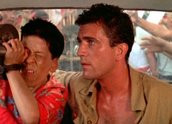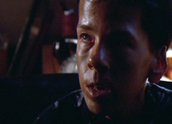


The Year of Living Dangerously (1982)
Synopsis
As Indonesian political tensions come to a head in late 1965, Guy Hamilton (Mel Gibson) arrives in Jakarta to report for the Australian Broadcasting Service on his first overseas posting. Without friends or contacts, he flounders until rescued by a small but well-connected Chinese-Australian cameraman, Billy Kwan (Linda Hunt, playing a man). Kwan sees great human potential in Hamilton. He grooms him, setting up exclusive interviews and engineering a romance with Jill Bryant (Sigourney Weaver), a young assistant at the British embassy. Bryant warns Hamilton that a bloodbath is about to break out between right-wing factions and the Communist Party of Indonesia (PKI). Hamilton pursues the story, against her wishes. Billy Kwan, disheartened by all the people he once believed in, decides to make a public protest against President Sukarno. When violence breaks out, Hamilton is caught between his rampant ambition, his conscience and his feelings for Jill Bryant.
Curator’s notes
The Year of Living Dangerously, based on a novel by Christopher Koch, was Peter Weir’s last film about Australia, or his first film about the rest of the world, depending on how you look at it. He has not returned to make a film with Australian characters or location since, but this film is concerned partly with an Australian character finding his way in the world. It followed a year after Gallipoli (1981), which could be said to be about the same thing, in some senses. In each film, a young, inexperienced Australian (Mel Gibson stars in both films) discovers just how violent and dangerous the wider world can be. In this film, the character of Guy Hamilton also discovers his own ruthlessness, at great personal cost. Hamilton betrays both his greatest friend, the cameraman Billy Kwan, and his new lover, Jill Bryant (although the ending suggests that he has learned a lesson).
The film is unusually complex in its story, like the politics it was trying to describe. In 1965, Indonesia’s founding president, Sukarno, was losing control of a power struggle that he had manipulated for 20 years. On one side were the right-wing factions of the Indonesian army and its pro-Muslim supporters. They were opposed to the PKI, the third biggest Communist Party in the world in 1965, with three million members. The genocide that followed the events shown in the film has never been fully explained, or documented, but credible estimates have put the number of PKI sympathisers (and their families) killed as high as one million. The PKI head, DN Aidit, who’s mentioned in the film (as Hamilton’s first exclusive interview) was among those executed.
The depiction of the lead-up to these events, which saw General Suharto depose President Sukarno, is exceptionally gripping, despite severe production problems that arose during shooting in the Philippines. The production was forced to relocate to Sydney, where the film was finished by recreating a slum on the side of a canal in the inner-city suburb of Glebe. The film remained banned in Indonesia until late 2004, when it was screened on a private cable channel, with some scenes cut. Linda Hunt won an Oscar, best supporting actress, for her performance as Billy Kwan.
- Overview
- Curator’s notes
- Video 3 clips
- Principal credits
- Find a copy
- Make a comment
- Map
- Add your review



